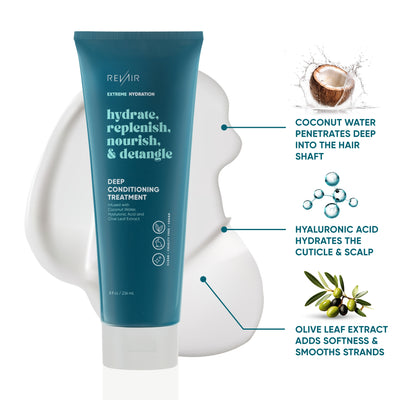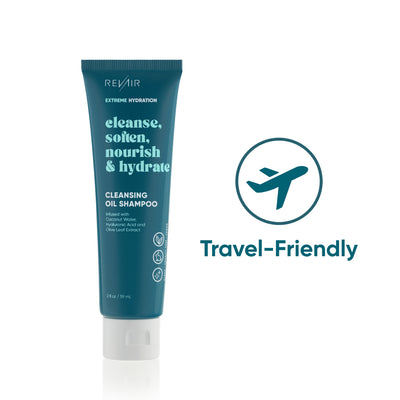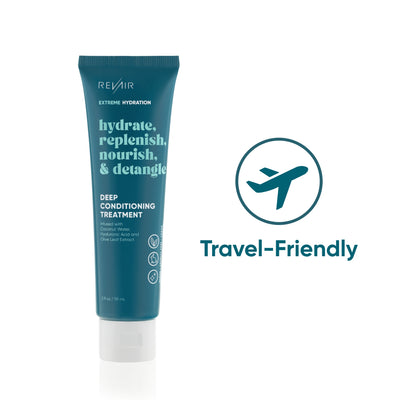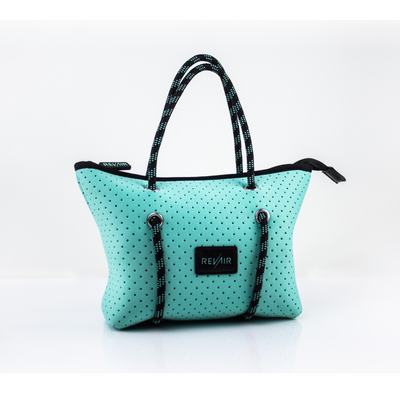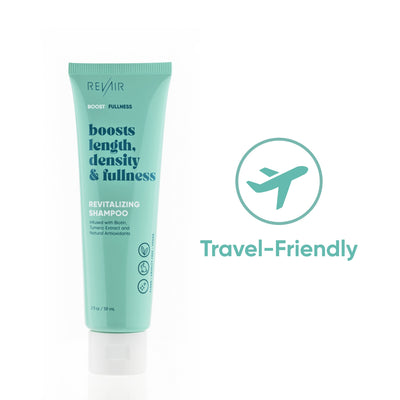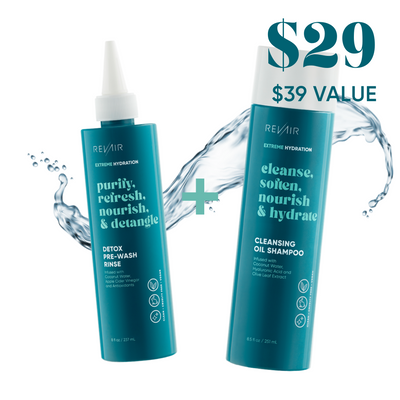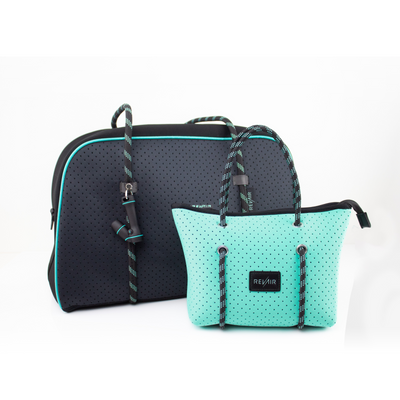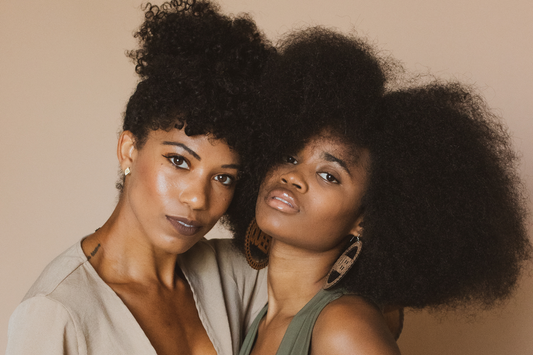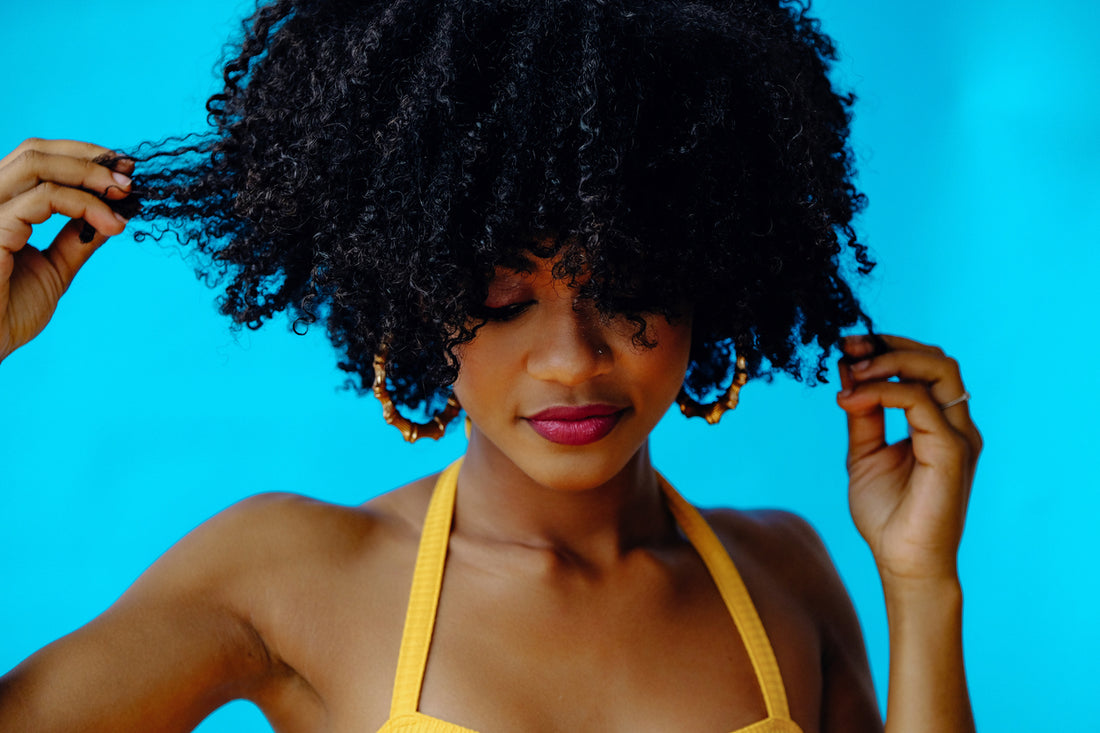
4 Warning Signs of Damaged Curls and How to Fix Them

At RevAir, we're committed to loving our hair. Healthy hair is our goal and curl appreciation is our passion. We know all too well that caring for curly hair isn't always smooth sailing. Sudden changes in your hair type can throw your whole style routine off . When that happens, it's easy to stumble into negative hair care practices like harsh chemical-treatments and heat styling to get your curls back to the shape you love. Let's commit to nourishing our hair, not damaging it. Knowing the telltale signs of curl damage can empower you to stop the damage in its tracks and help your hair look its very best.
Stay on track with these four warning signs of hair damage and learn how to fix your natural curls without damaging your beautiful locks any further. This year, let's enjoy a healthy hair lifestyle by honoring our curls with gentle care and plenty of love.
1.) THERE'S A TANGLE IN YOUR HAIR CARE ROUTINE
You're combing your fingers through your beautiful curls when suddenly, you encounter a stubborn knot. Then another. And then another. And another…
If you've been finding tangles in your curls more often, this may be an indicator of curl damage. Healthy curls should have plenty of elasticity and movement to allow you to style them without battling snares. Healthy hair retains the soft, springy curl texture we all know and love. Tangles are often the result of dryness, which creates too much friction between hair strands. When this happens, your hair can fray. This eventually leads to split ends and breakage, which causes curls to lose their beautiful shape and starts to create a frizzy, dry look.
Fortunately, you can escape this tangled spiral by creating a detangling routine. The first step to preventing tangles in curly hair is to incorporate the right conditioner into your hair care routine. You'll want to rely on a conditioner that's blended from all-natural oils and nutrients and free of sulfates, parabens and other nasty additives known to cause dryness. The right conditioner should also have plenty of "slip." Essentially, this means that it should allow you to easily glide your fingers or a wet brush through your hair in the shower without getting snared by a tangle. Once you've found your perfect formula, commit to keeping up with your curls with a detangling routine.
Always brush your hair when wet to avoid snapping off any fragile strands or damaged curls. Coat the hair in a generous layer of conditioner and work your wet brush through in sections. A wide-toothed comb is also a great tool to use when separating your curls. Gently work through any smaller knots with your fingers and avoid tugging and pulling on your hair during this process. At night, opt for a static-free bonnet or silk pillowcase when you go to bed to ensure tangle-free and frizz-free mornings.
2.) YOUR CURLS ARE LOSING THEIR SHAPE
Have you always had an S-shaped curl pattern? What about tight coils that lay perfectly against your head? Of course, we can expect some variation in our curl pattern over time. Factors such as age, hormones and even a new climate can alter the natural shape of our hair.
However, if you suddenly notice your curls losing their shape without any easily identifiable cause, this may be a telltale sign that your hair is losing elasticity and structural integrity. This often occurs as a result of hair damage that causes the keratin protein bonds to break.
If you notice a distinct change in the curls you love, there are a few fixes you can implement to reverse the damage and get your hair back. First, try a keratin protein treatment. Fortifying your hair with the naturally occurring protein that gives it strength, volume and shape is a great first step.
If your curls don't return to their desired shape in a couple of weeks, it may be time for a trim. Get rid of some of those dead hair ends and start fresh. Shorter hair tends to give more voluminous curls. If you're missing longer locks, try rocking a protective style during the interim. Knotless braids are great for adding length without causing root tension and excess damage.
Gentle hair care will be a key area of focus for preventing curl-pattern disruption in the future. When developing a good proactive hair care routine, consider what factors contribute to protein damage. If we think back to chemistry class, we know that heat is the main disruptor of protein bonds. Be mindful of UV-ray exposure and always apply a lightweight SPF to your curls to avoid sun-damaged hair. When it comes to your home style routine, consider a low-maintenance and low-heat approach to natural hair care. More and more naturalists are turning away from traditional blow dryers and flat irons to embrace healthy, hair-focused styling. RevAir's unique, low-heat design makes our device the perfect solution for drying, stretching and styling without frying your curls, even if you have low-porosity hair. Check out what using the RevAir looks like for your daily style routine.
3.) YOUR SHINE IS DULL
The telltale signs of curl damage are often subtle. When your normally radiant hair begins to appear less reflective, this can gradually shift to overall dullness. Damaged hair tends to have less luster than healthy hair as the protective cuticle layer is stripped away. If you find that your shine has dimmed recently, this is a good indicator that you aren't getting enough moisture. Dryness can cause your color to fade and the overall tone of your curls to become less luminous. It can also be a sign of heat-damaged hair in desperate need of some TLC.
Your hair's sparkle not being quite as show-stopping as it once was means it's time to up your hydration game. Work in a deep conditioning moisture mask at least once a week. Supplement your natural hair care routine with a daily moisturizing serum. The best DIY serums use natural oils to bring back the shine in your locks. Try jojoba, coconut, or Moroccan argan oil for the best results. Mix with a pinch of water, aloe for clarifying, and your favorite scents like rosemary or lavender for a dull-curl revival that leaves you feeling fully pampered. Not only will this give your hair the boost it needs, but applying hair oil regularly can support your curls' natural oil production to combat recurring dryness.
Not sure if your hair is truly losing its luster or if you're imagining things? Save pictures of your hair on its best days. This a great reminder of all the reasons you love your healthy hair, and pictures are a good tool to reference when you're having a dull moment in your curl lifecycle. Visual references can help identify your hair's needs and give you an idea of how it has changed over time. Later, you'll be able to use those photos as a guide while you restore your natural locks to their former glory.

4.) BRITTLE ENDS AND HAIR CLUMPS IN THE BRUSH ARE COMMON
If you've noticed an increased amount of shedding accompanied by a change in texture, this is a good indicator that your hair has been compromised. Healthy curls are soft and vibrant. While all curls experience some shedding from time to time, excessive breakage can mean that your hair is experiencing weakened protein bonds alongside frizz and split ends.
You might also notice an aggravated scalp. Dryness leads to flaking, inflammation and redness throughout the scalp line. These symptoms often contribute to brittle, fragile ends and slowed hair growth. Hair loss can be seasonal, hormonal, product related, or caused by a variety of other personal and environmental factors. Identifying the key issue can help you better address the damage your hair has experienced before it leads to increased shedding.
Start at the simplest root cause and go from there. What products do you typically use? Are they curly-hair approved, and free of harsh chemicals and additives? When was the last time you changed your protective style, or are you due for a trim? Are you eating right and getting enough water throughout your day? Has there been a major fluctuation in weather, temperature or season lately that might be affecting your hair? Are you brushing too hard or are you brushing your hair while it's dry and fragile? Do you know your hair's porosity and are you sealing the ends to ensure hydration retention? How is your scalp care routine? If you don't have one, now is the perfect time to start.
Asking yourself these questions can help narrow down the factors that may be affecting your hair. Often, the best solution for how to restore damaged curly hair is a combination of healthy hair practices to begin addressing dryness and shedding as soon as possible. As you become more confident in your curl care routine, you can modify it to suit your unique hair type and texture. Start here with our simple, healthy hair tips to lock in softness and promote new hair growth.
LOVING YOUR HAIR
With all the changes our curls can undergo, one thing is certain - we love our hair. We embrace all of its texture, volume and dynamic movement. Recognizing a change in your curls can be an indicator of damaged hair that empowers us to adjust our natural hair care routine for healthier locks. These small details can help identify bigger needs for damaged curly hair, such as dryness, over-processing and too much heat exposure.
Treat your curls right by loving them at every stage in their lifecycle. Our team is here to support your healthy hair journey every step of the way. Reach out to RevAir to learn more about natural hair care and make the switch to low-heat styling to keep your hair looking and feeling healthy and beautiful.
